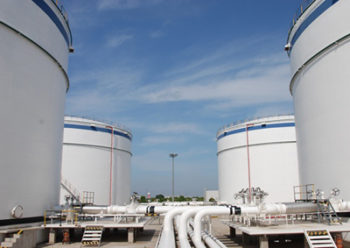
South Korea is in the process of easing blending restrictions at its oil storage terminals as the world’s No. 5 crude importer bolsters an effort to become a North Asia trading hub.
Asia’s fourth-largest economy is pushing ahead with a 2014 plan to turn Ulsan and Yeosu ports into northeast Asia’s oil shipping and storage cluster, a potential challenge to the long-established Asian oil trading centre in Singapore.
South Korea’s government approved legislation earlier this year that will allow trading companies to blend fuels at the country’s oil terminals, although technical aspects and guidelines needed for implementation are still being formalised.
“The idea of the new regulation is to allow international oil traders to blend petroleum products and chemicals freely in bonded areas like tank terminals,” said Jong Yeol Kang, president of South Korea’s Ulsan Port Authority (UPA), in response to emailed questions from Reuters.
Prior to the new legislation, traders with storage tanks in South Korea’s bonded areas were only able to store and export fuels they had on hand and were not allowed to mix fuels into new blends to meet clients’ specifications.
Fuel blending was restricted to South Korean refiners alone.
Feedback from traders has so far been positive, Kang said. Details of regulatory terms and guidelines will be released shortly, he said, without specifying a date.
South Korea’s ambitions could quickly divert some oil trade away from Singapore, said Ellen Ruhotas, managing director at Ratio Group, a Singapore-based advisory firm specialising in bulk liquids storage.
“With this new capability traders could, for example, supply the near-by Japanese market with various fuels that would have otherwise come from places like Singapore, and so it would be interesting to see how that unfolds,” Ruhotas said.
South Korea’s project is one of the world’s few major greenfield commercial tank farm developments. The country is aiming to increase oil product exports to serve the Asian market, where the 2017 BP Statistical Review of World Energy says demand will grow to 2.1 billion tonnes of oil equivalent by 2035, from 1.5 billion tonnes in 2015.
“For the moment, we are focused at the northeast Asia market including China, Japan and Korea. We believe there is a strong demand growth within that region,” Kang said.
Tank terminals at Ulsan have 23 million barrels of storage capacity, while Yeosu has an additional 8.2 million barrels, according to Korea National Oil Company’s website.
South Korea’s oil hub project will add another 28 million barrels of capacity by 2026, Kang said.
Singapore has about 79 million barrels of oil storage capacity, with 30 million barrels available in nearby areas of Malaysia and Indonesia, Thomson Reuters Eikon data shows.